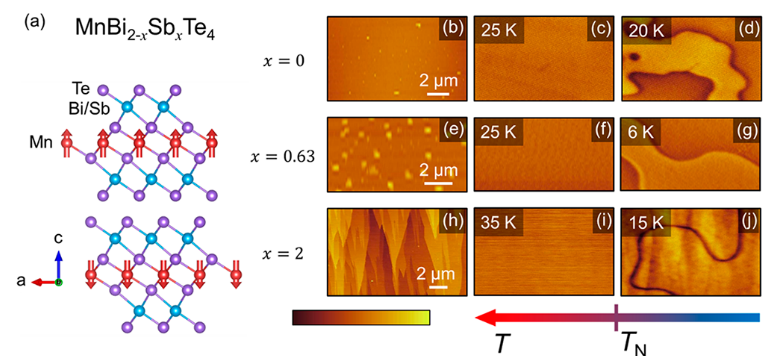Formation of topological structures and their dynamics
Our team has demonstrated expertise in designing and controlling polar vortices, supercrystals, and skyrmions, in (PbTiO3)n/(SrTiO3)noxide superlattices, which gives us a unique opportunity to use it as a prototypical testbed to validate fundamental concepts relating to fluctuation dynamics, metastability, and phase transitions using ultrafast X-ray techniques.
Engel-Herbert group maintained the hybrid MBE system that is equipped with a metalorganic precursor inlet to supply titanium tetra isopropoxide (TTIP) to make sure titanate superlattice structures can be grown. The TTIP charge needed to be replaced and the entire gas inlet system had to be cleaned to remove residuals that have clogged to system and resulted in unstable flux supply. Sr, Ca and Ba have been loaded into the effusion cell and calibrated and the MBE chamber is in a "ready to go" status once strain state, number of layers and type of materials in the superlattice structure (SrTiO3, CaTiO3 or BaTiO3) are specified.
In-situ ultrafast x-ray experiments were performed at Argonne National Labs and SACLA in Japan. These studies have shed light on the formation of the light-induced supercrystal phase. Additional experiments on THz driven dynamics of polar vortex phases were performed at LCLS. Collective excitations of polar modes called vortexons were observed and predicted by atomistic simulations and phase-field modeling. We were recently awarded a highly competitive LCLS Campaign proposal (PI: Gopalan, titled, Fluctuations, Emergence, and Dynamics of Complex Topological Superstructures by Design) which provides a guaranteed series of beamtimes at LCLS from 2020 to 2022. The creation and dynamics of such extended structures will be studied by ultrafast X-rays at the LCLS and will be used to test the phase field models developed to predict these structures.
Magnetic phase transition and domain structure in topological systems

MnBi2Te4 was recently discovered as the first known intrinsic magnetic topological insulator, opening up the possibility of realizing unconventional topological phases with quantized transport at zero magnetic field at record high temperatures. We will use a combination of steady state and ultrafast spectroscopy and diffraction to study the coupling between carriers, lattice, and spin degrees of freedom in the family of materials MnBi2-xSbxTe4. The experiments, in combination with first-principle calculations will be used to identify nearest neighbor exchange interaction parameters, as well as the sensitivity of these to external perturbations and chemical substitution. These will be used as an input for phase-field modeling of the mesoscale magnetic domain structure, which is known to be a critical aspect in the realization of dissipationless chiral edge modes through the quantum anomalous Hall effect. Such simulations will eventually be validated by means of MOKE imaging.
